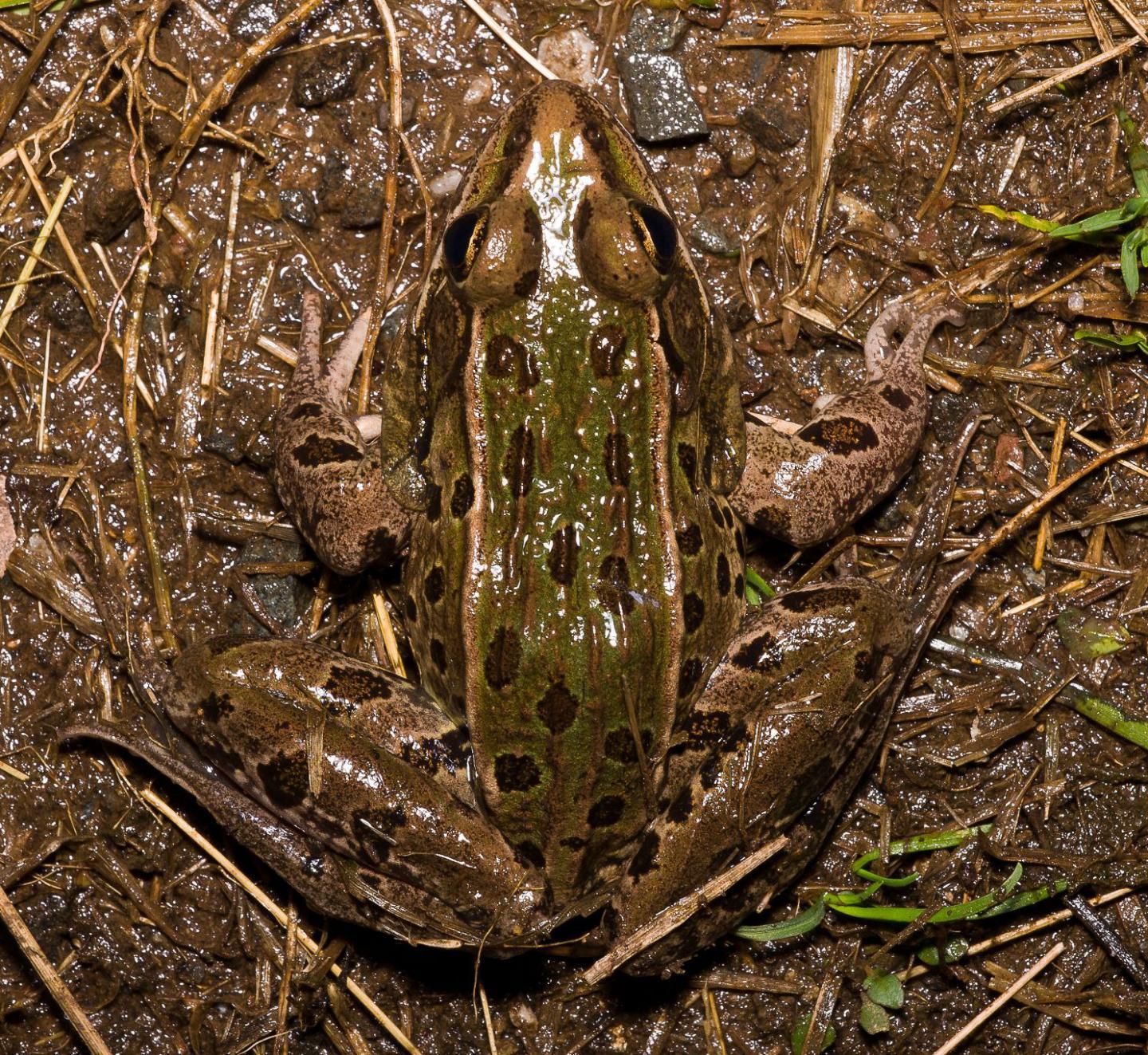Scientists discover a new species of leopard frog from New York City and surrounding region, according to a study published October 29, 2014 in the open-access journal PLOS ONE by Jeremy Feinberg from Rutgers University and colleagues.
The frog species was discovered in the New York City metropolitan area and surrounding coastal regions, one of the largest and most densely populated urban parts of the world. Among other data, scientists analyzed acoustic and genetic data to characterize the new species of leopard frog, named Rana kauffeldi.

Photo of the new male leopard frog species, named Rana kauffeldi.
(Photo Credit: Feinberg et al.)
The species inhabits parts of New York City, where it was first identified, but its range also extends to the north and south and follows a narrow and largely coastal lowland distribution from central Connecticut to northeastern North Carolina. The researchers suggest the new species typically occurs in open-canopied wetlands interspersed with upland patches, but centuries of habitat loss may threaten the species. The authors suggest that this discovery demonstrates that new vertebrate species can still be found periodically even in well-studied areas rarely associated with undocumented biodiversity.
Jeremy Feinberg added: "The discovery of a new frog species from the urban Northeast is truly remarkable and completes a journey that began six years ago with a simple frog call in the wilds of New York City. This story underscores the synergy that traditional field methods and modern molecular and bioacoustic techniques can have when used together; one is really lost without the other, but together are very powerful tools."
Source: PLOS